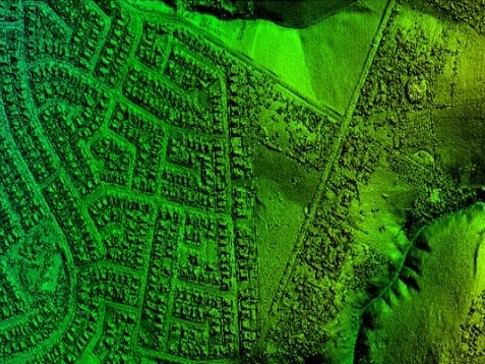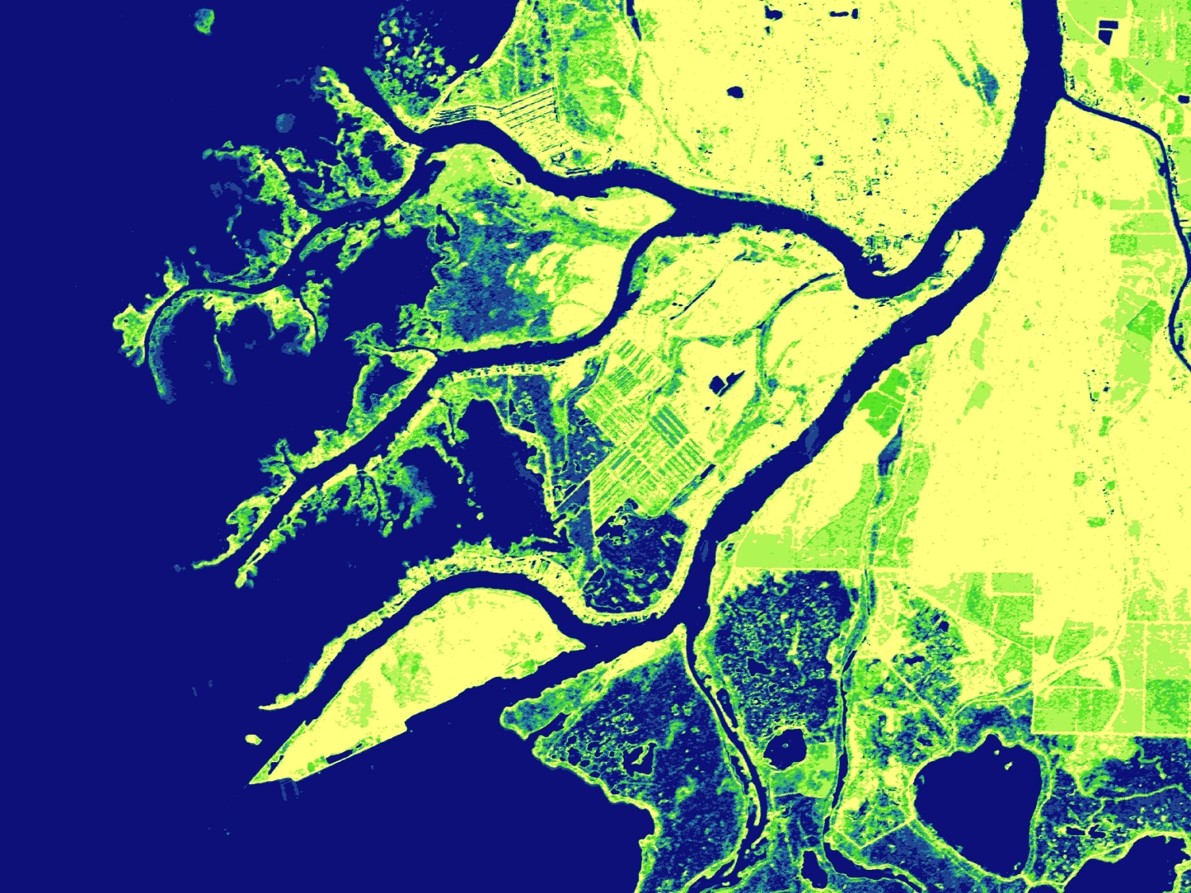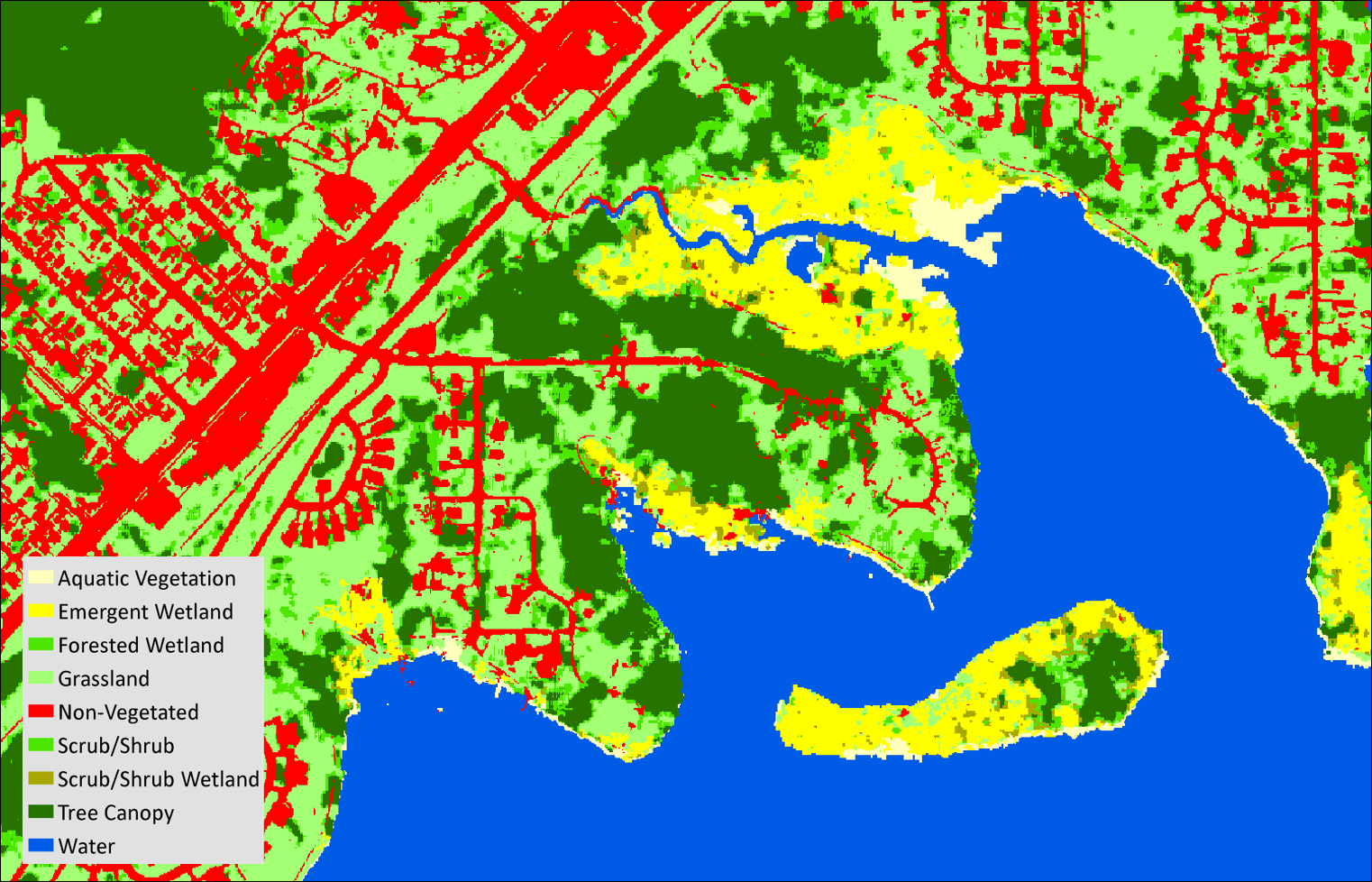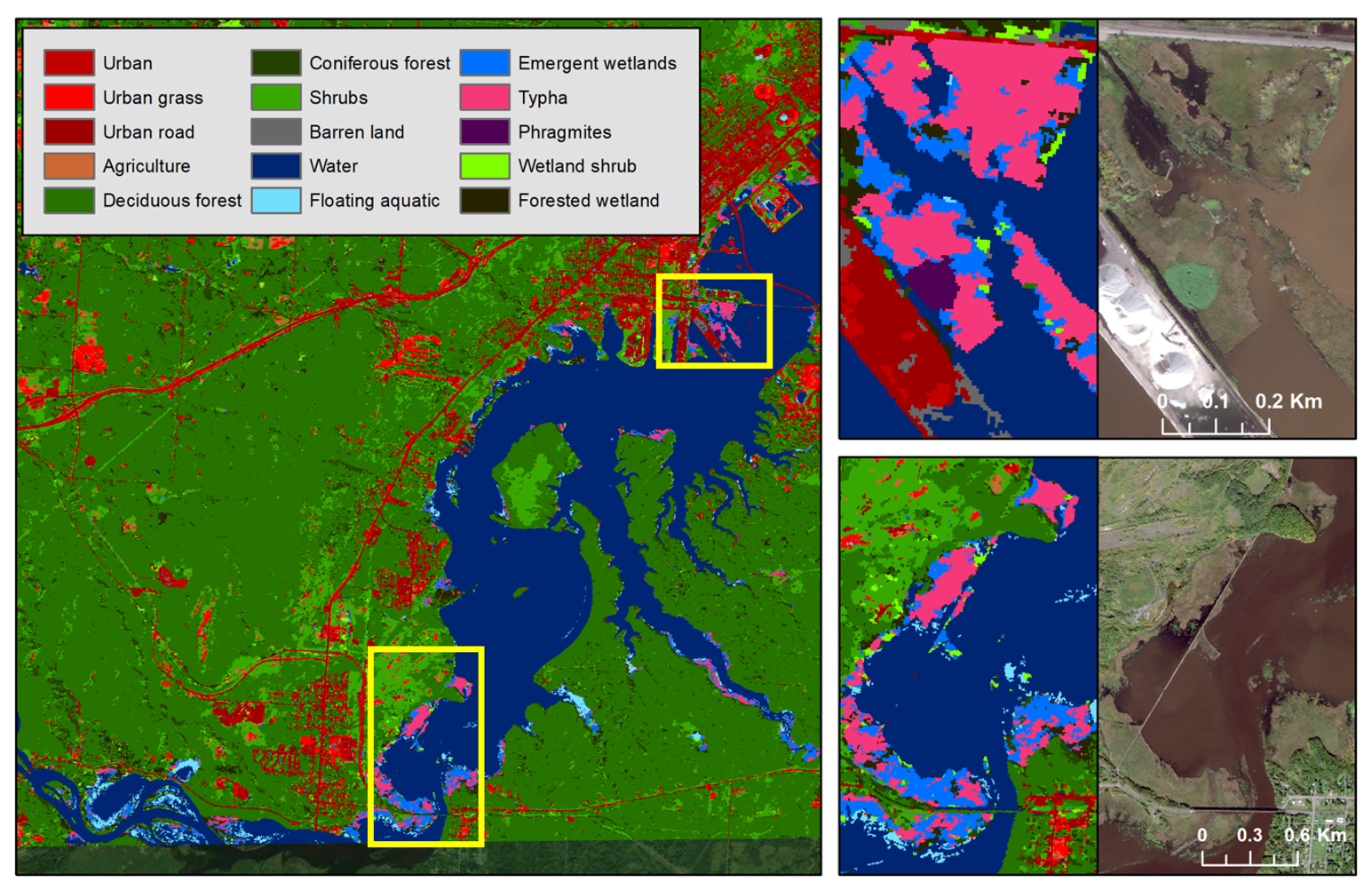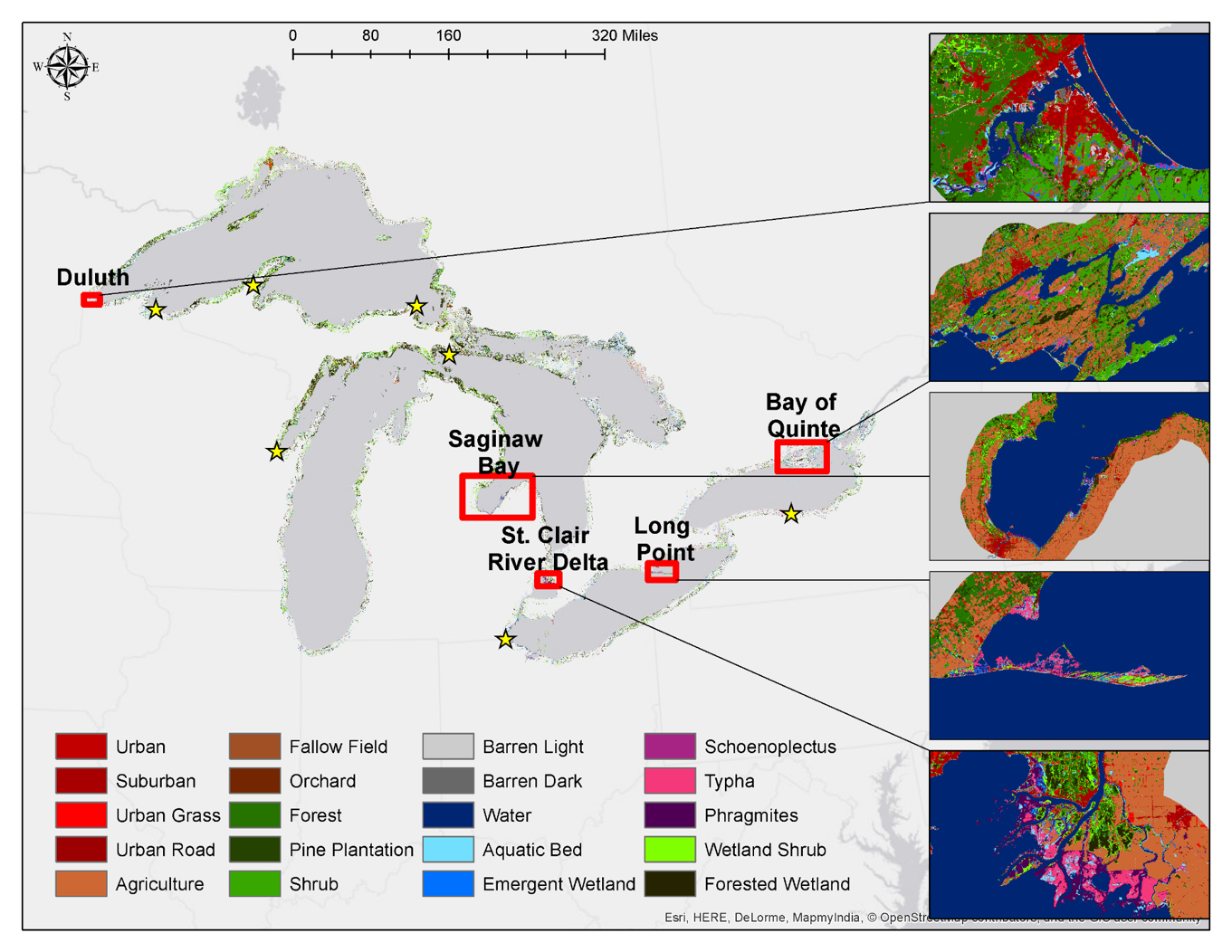
GLARS strives to produce deliverables that are useful to a majority of resource managers and other end users. Manager and end user monitoring needs were determined via surveys early in the project and continued surveying (see the storymap survey tab). Most of the products are focused on the pilot study sites with the exception of the digital surface and elevation models which were produced for every Worldview-2 stereo image pair across the Great Lakes Basin. Other products currently exist only for the 11 pilot Great Lakes coastal wetland sites, including: hydrology products (i.e. surface water extent, wetland inundation extent, water level changes, wetland soil moisture), high-resolution maps of wetland extent, type, and change (gain and loss). The GLARS team worked to build approaches for automated or semi-automated mapping and monitoring and were successful in doing so for most of the products (DSM, hydrology, change products). The exception is the wetland ecotype mapping which requires human input to train the classifiers to produce accurate maps. The team continues to evaluate transfer learning, domain adaptation and other AI approaches to make ecotype mapping more automated.
Explore the products on the interactive GLARS 4D story map .
Download the products at the GLARS Download Hub .
Take a survey to provide feedback on these products.
